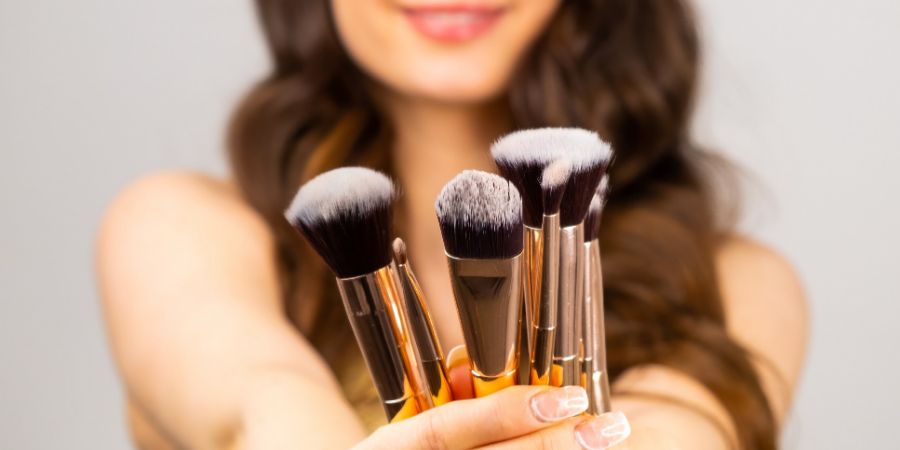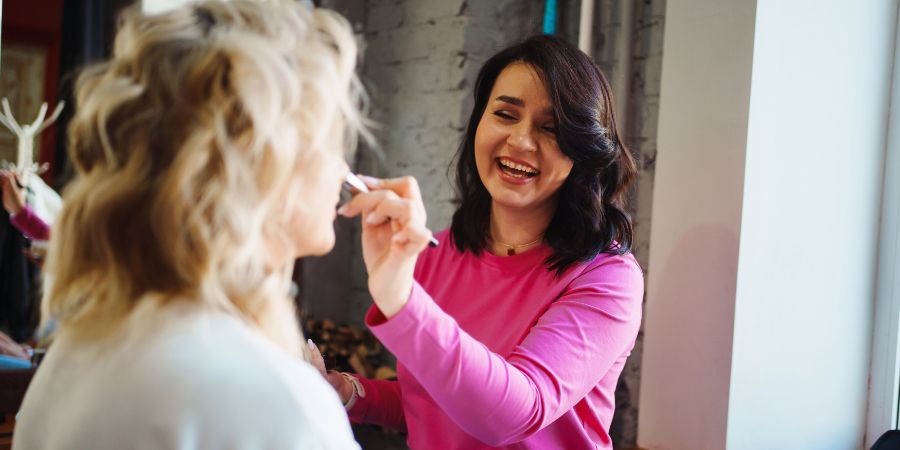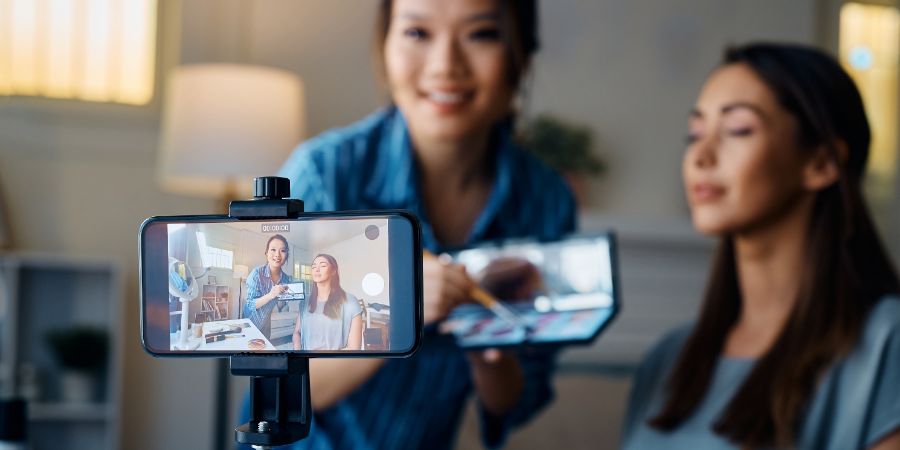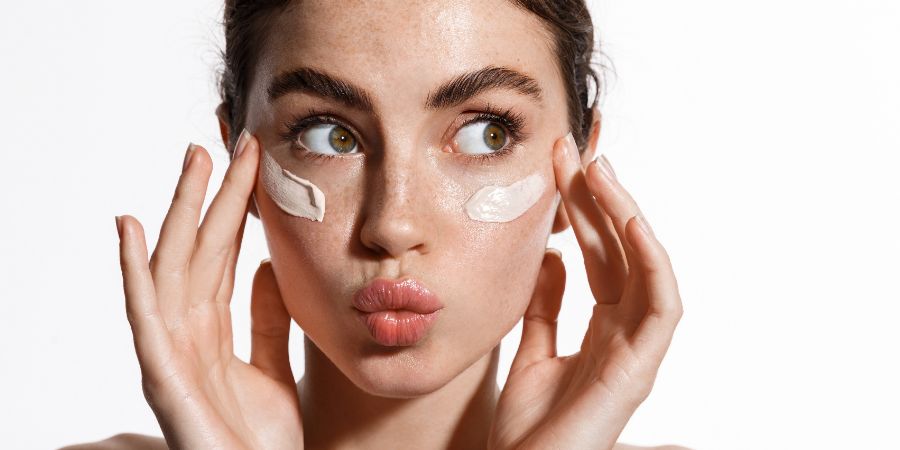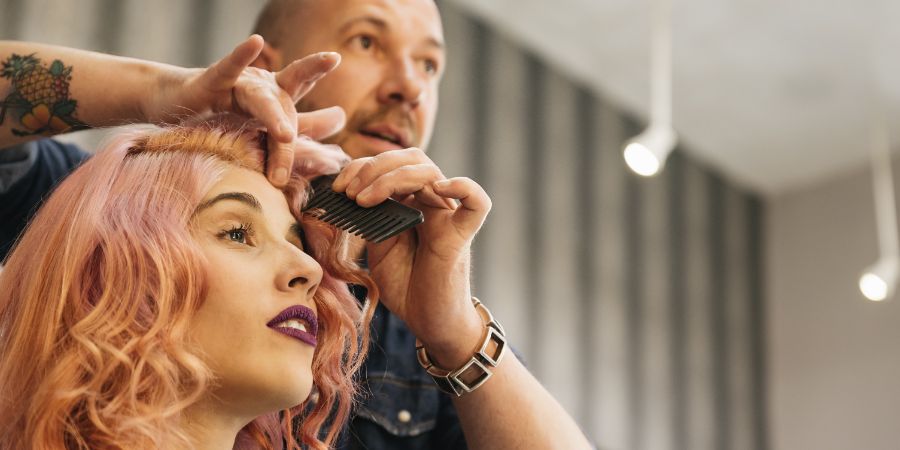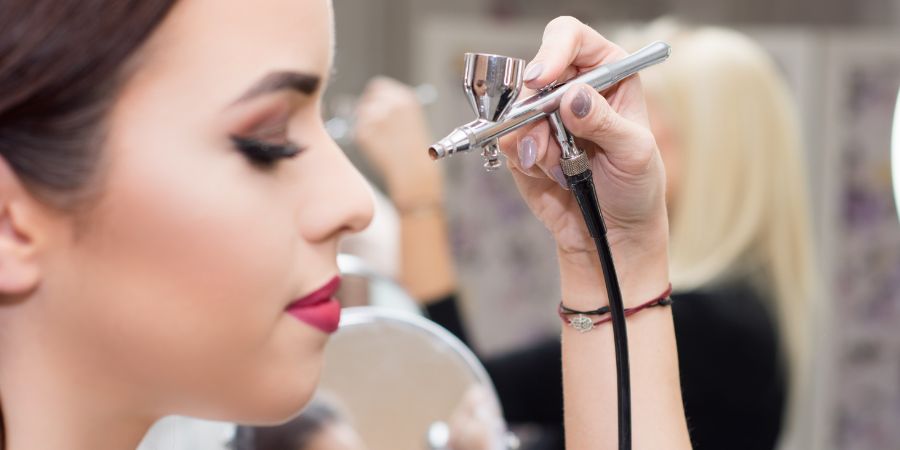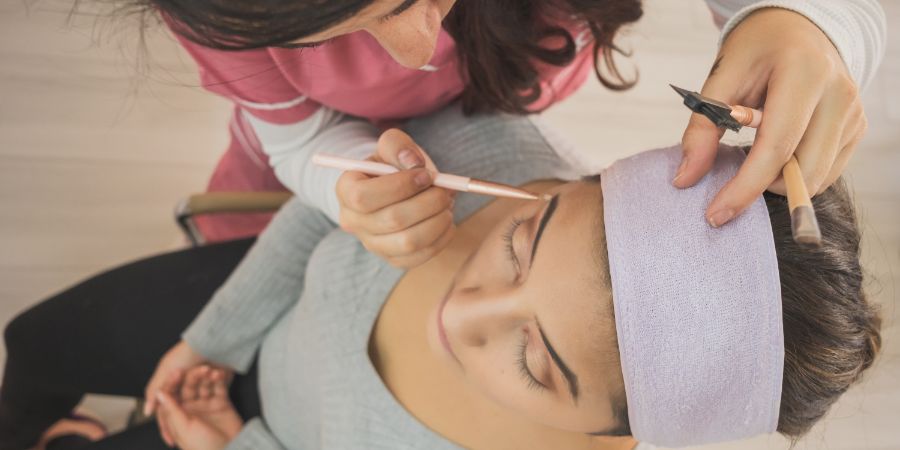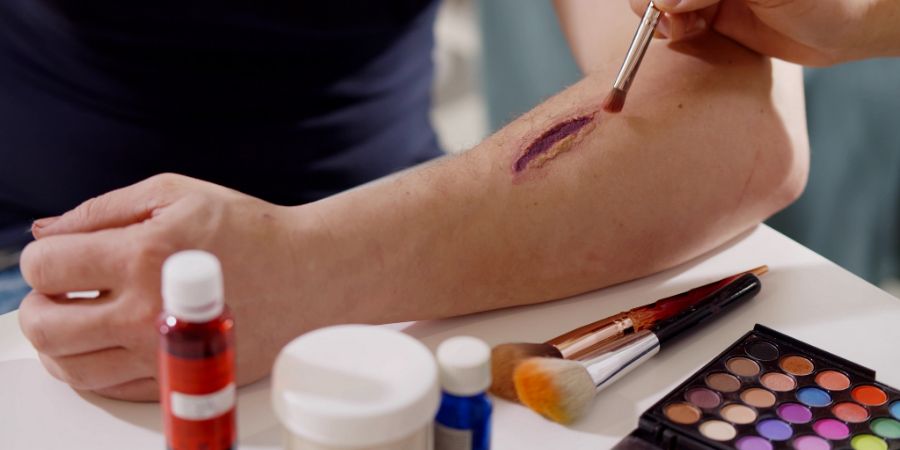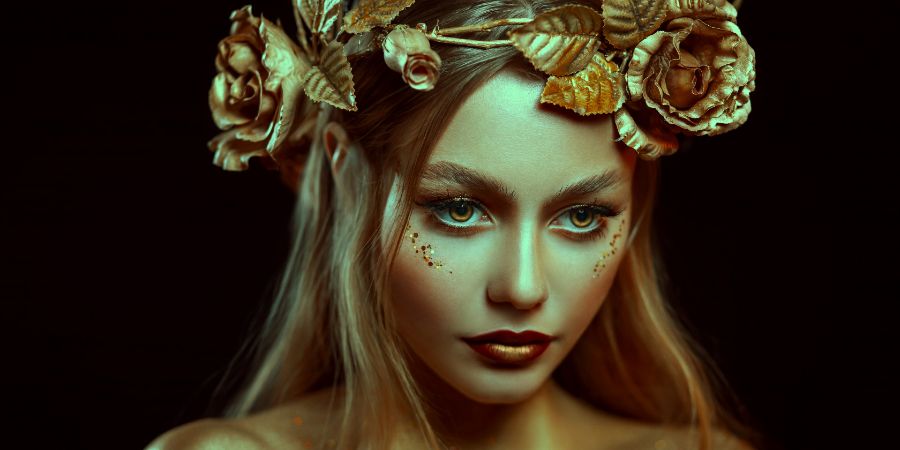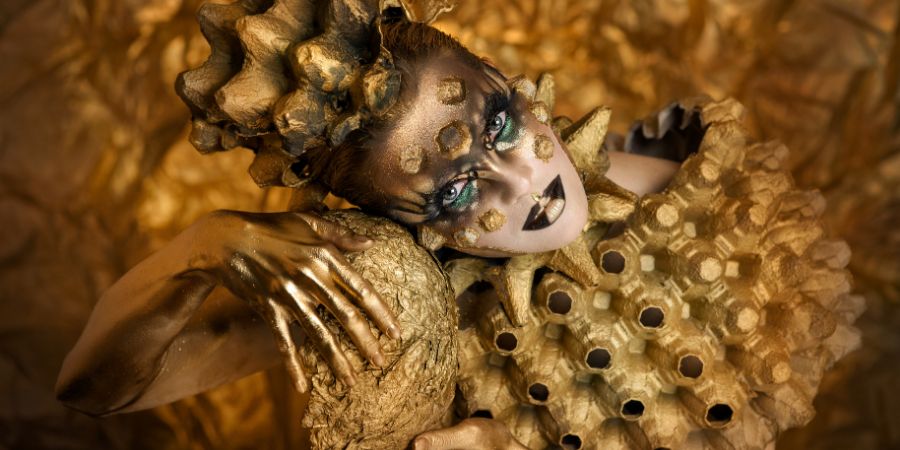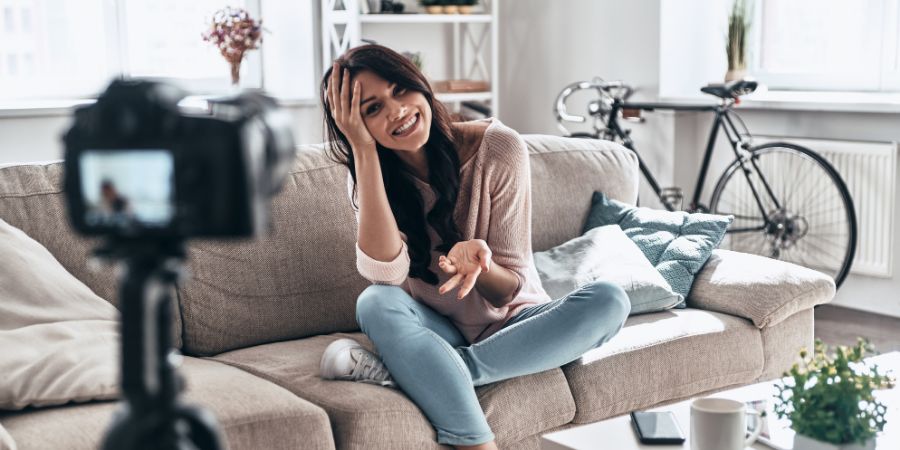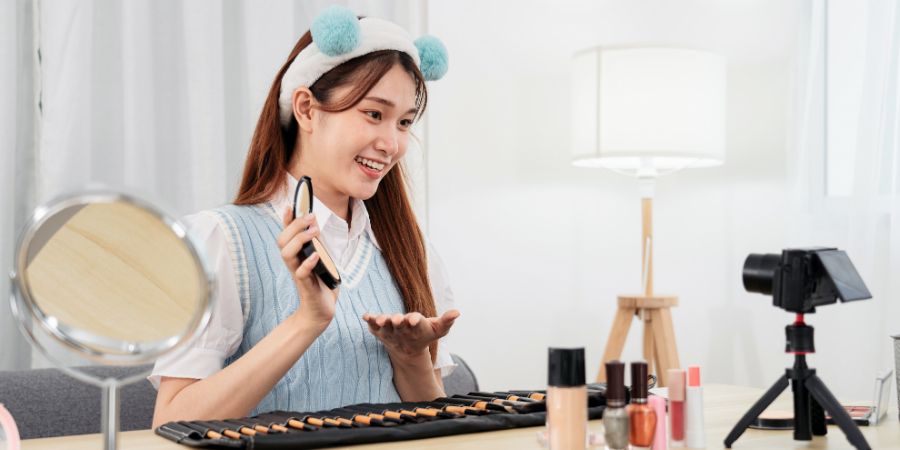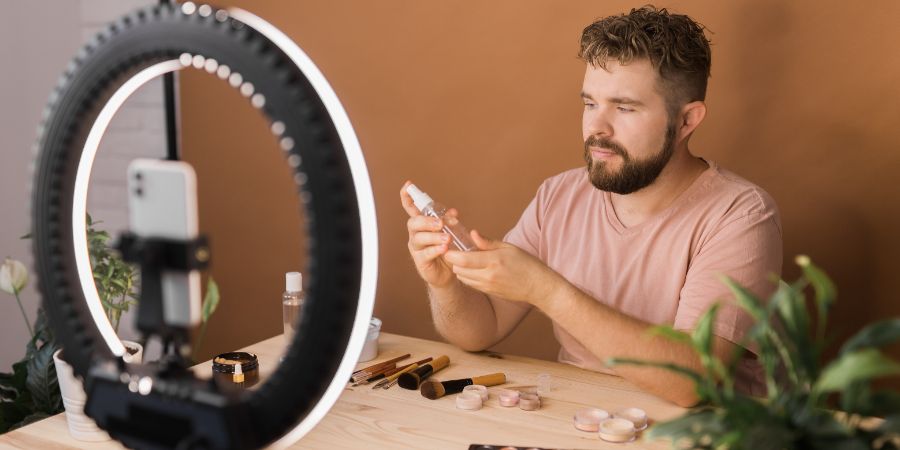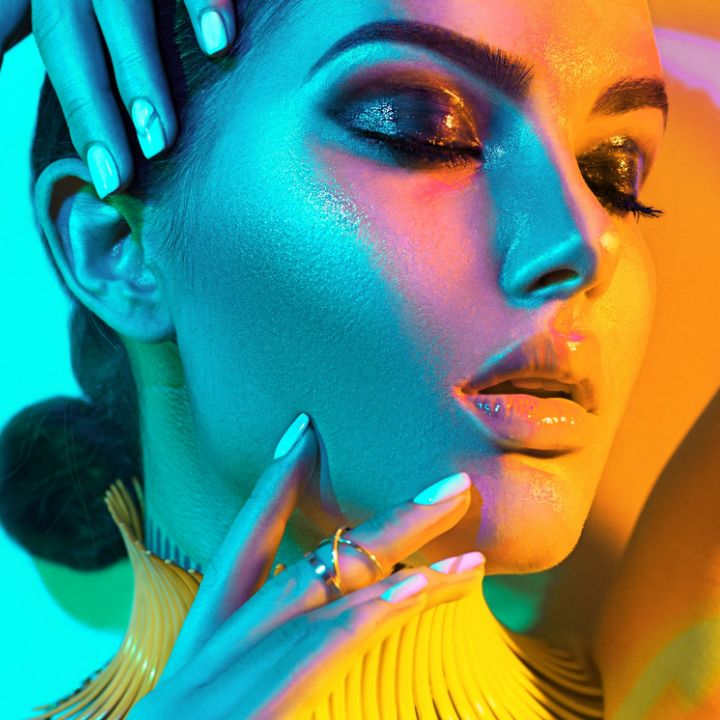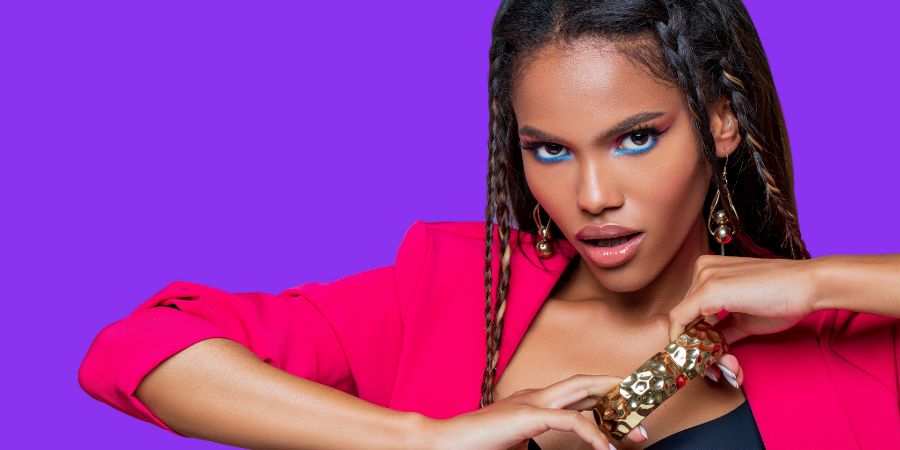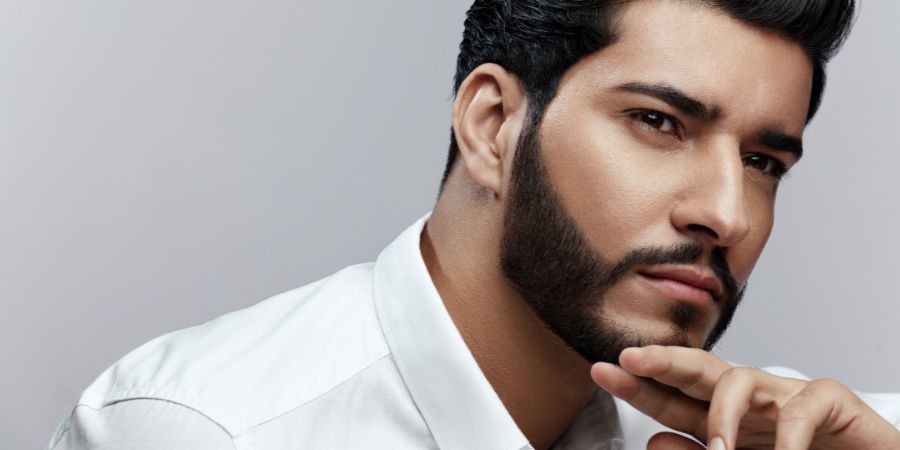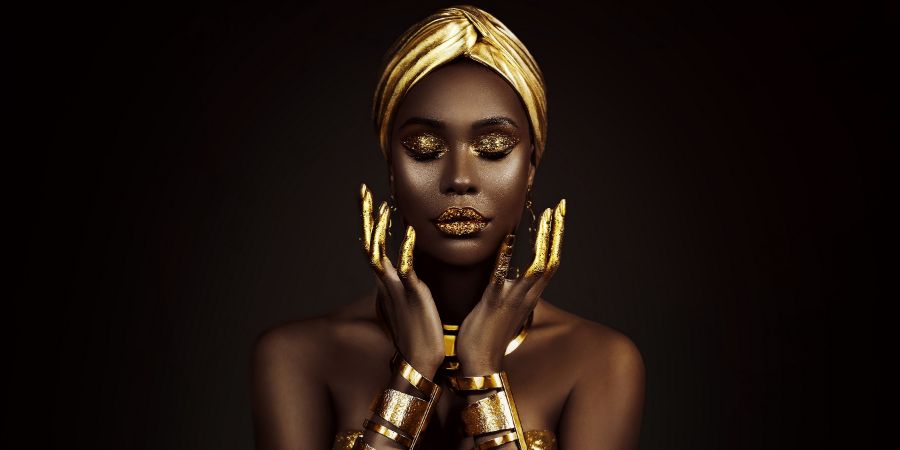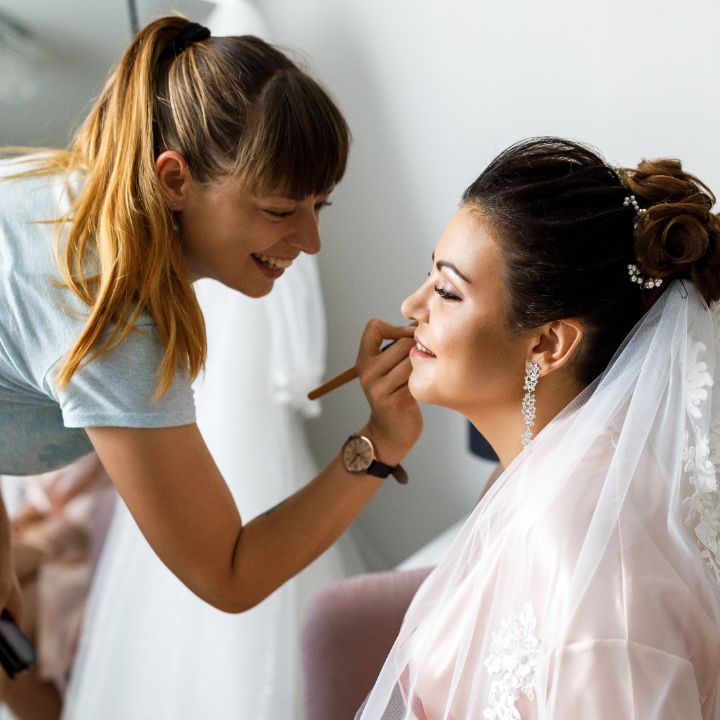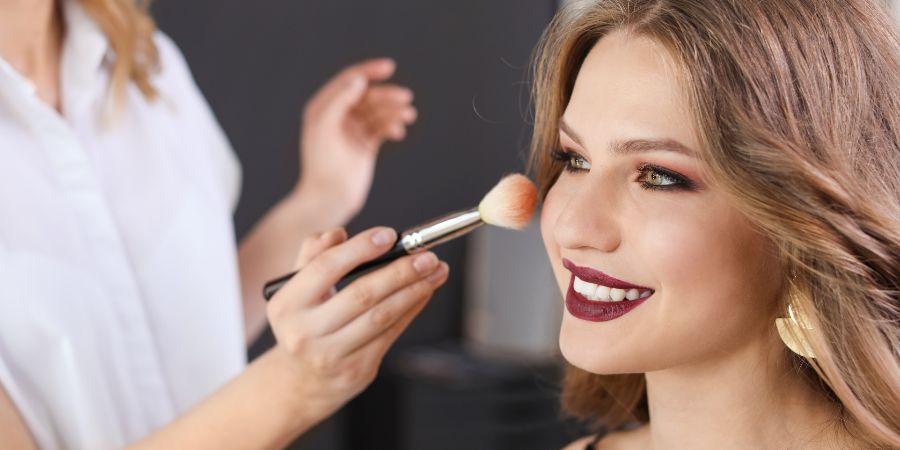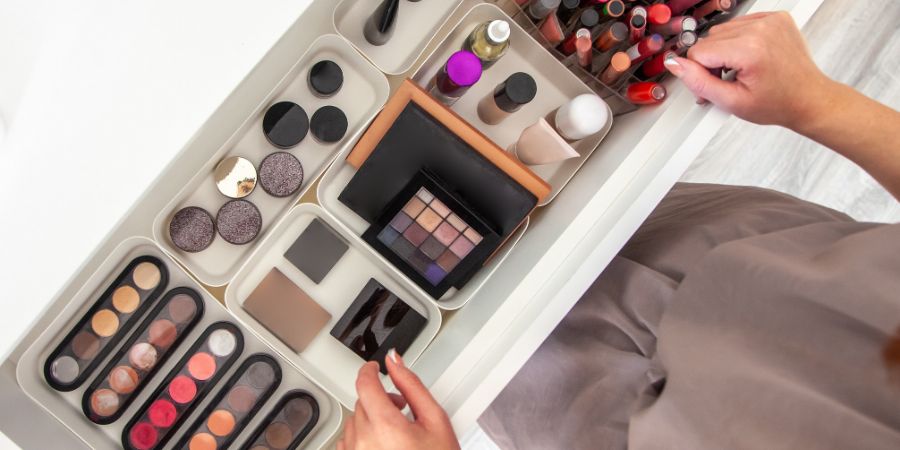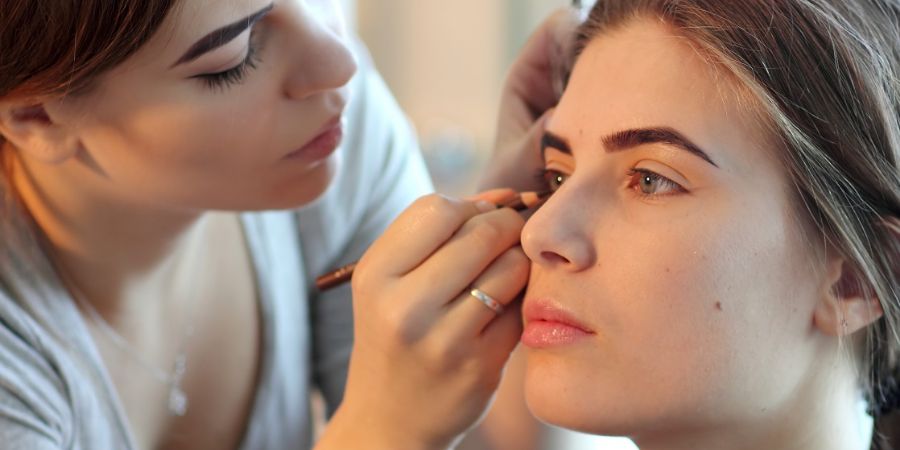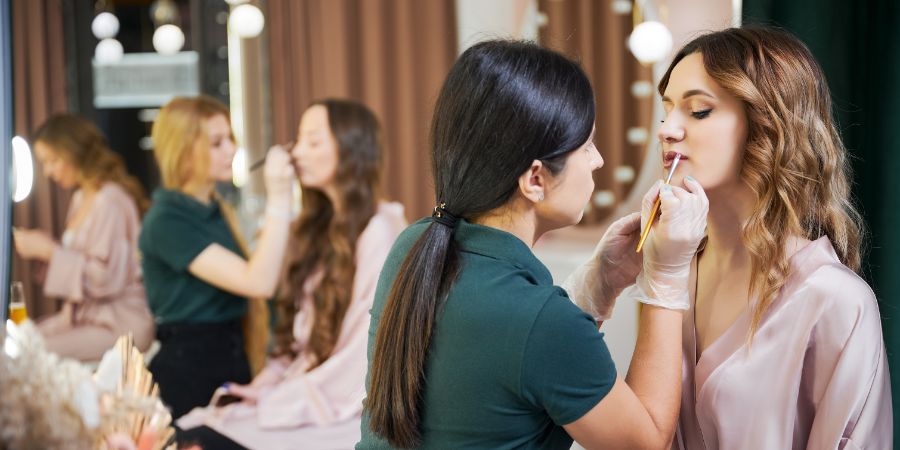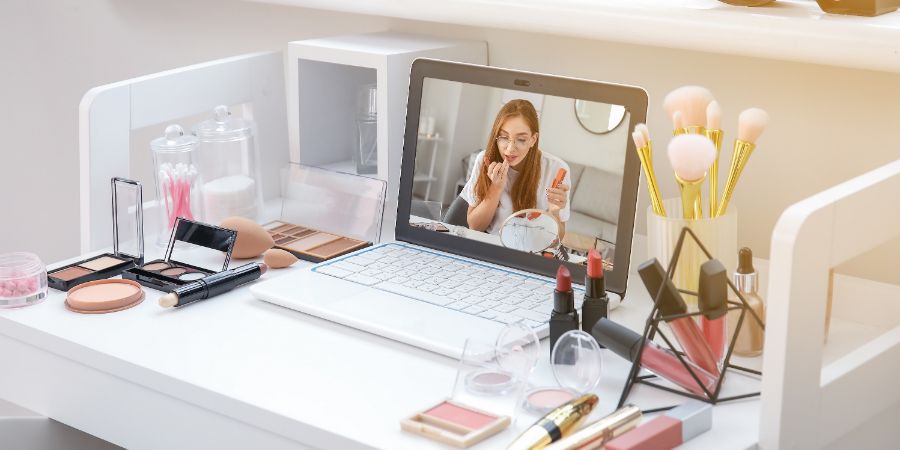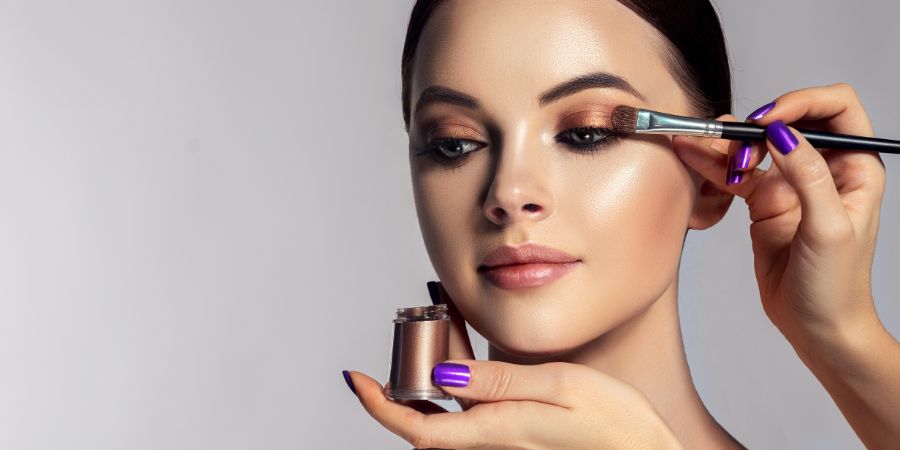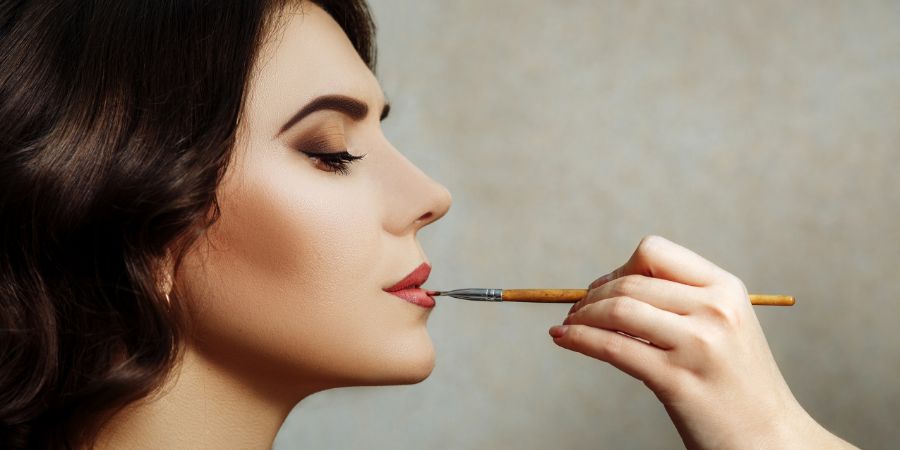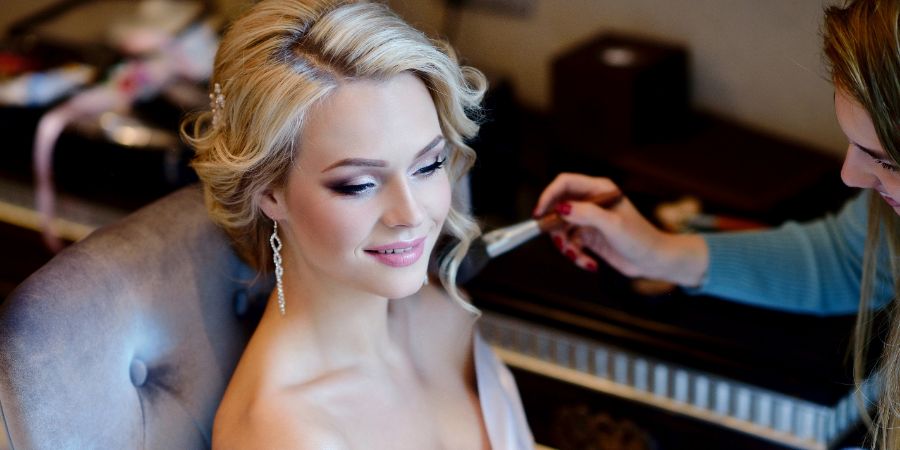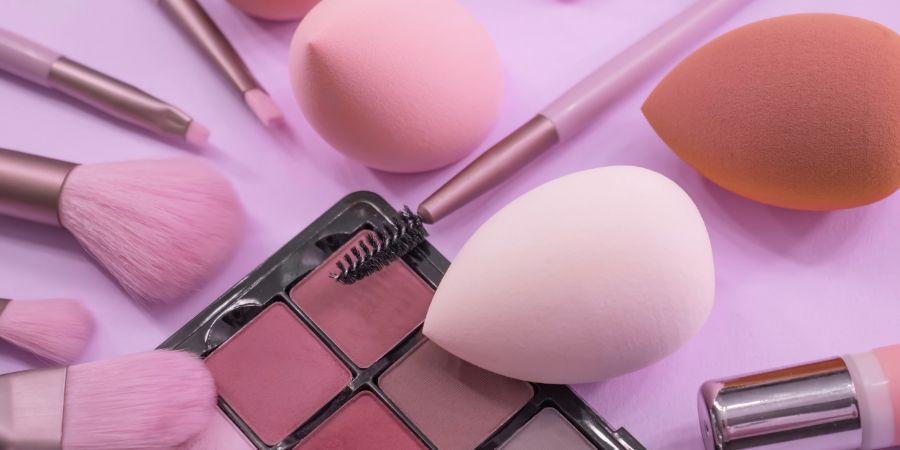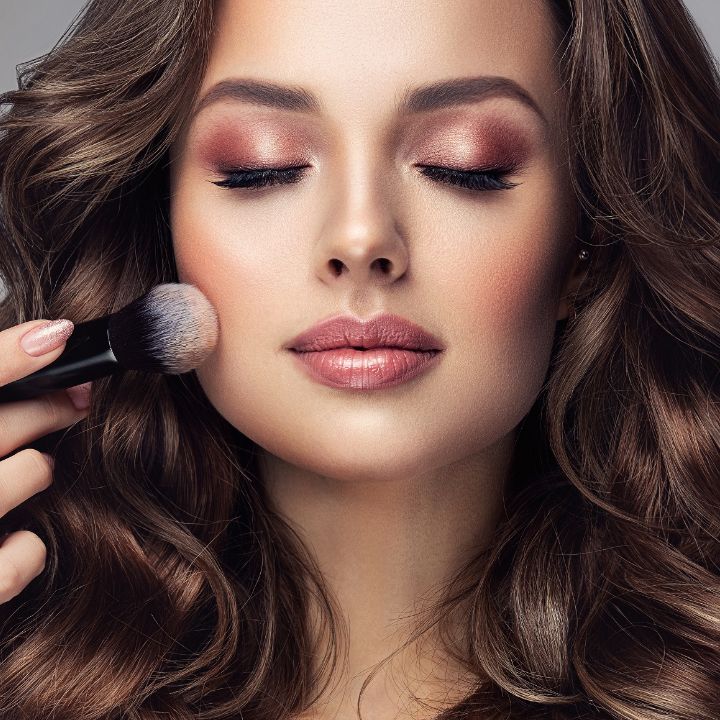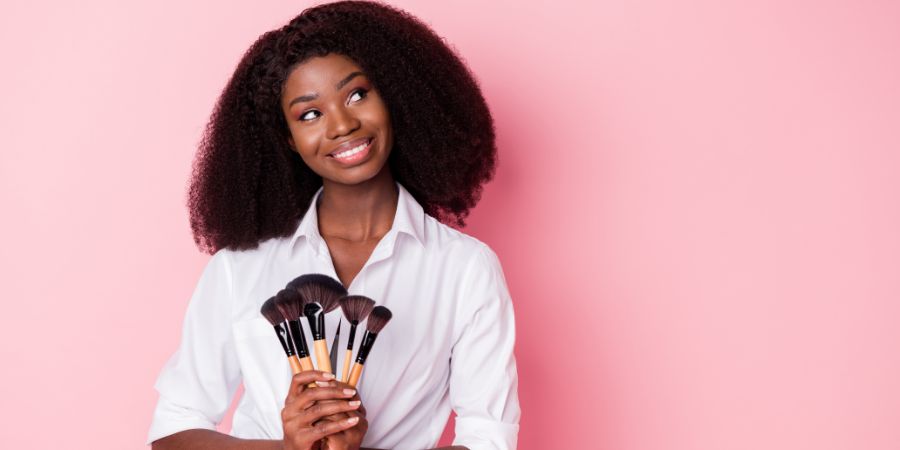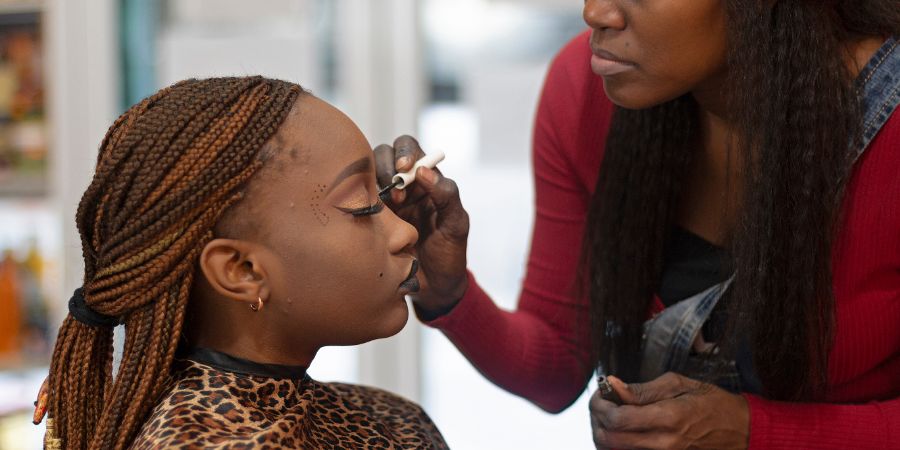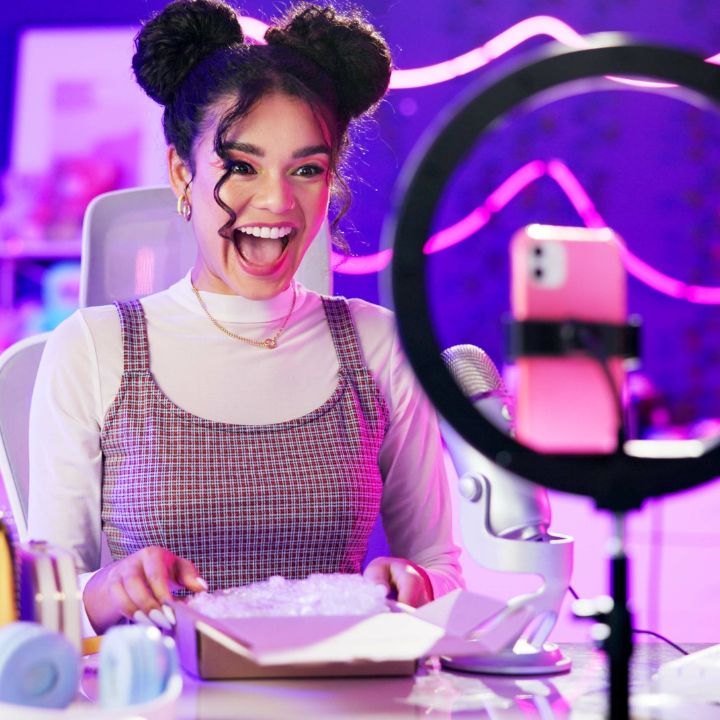
What You’ll Learn
- The role of a beauty content creator
- How it is the same – and how it differs – from that of an influencer
- Five niche ideas for the type(s) of content you can create
- What goes into developing your brand
- Defining your target audience and the importance of engagement
- Which social media platforms to target
- Your earning potential (and 9 business-savvy ways to monetize your efforts)
- How to produce incredible content and collaborate with others
- The best – and worst – ethical practices
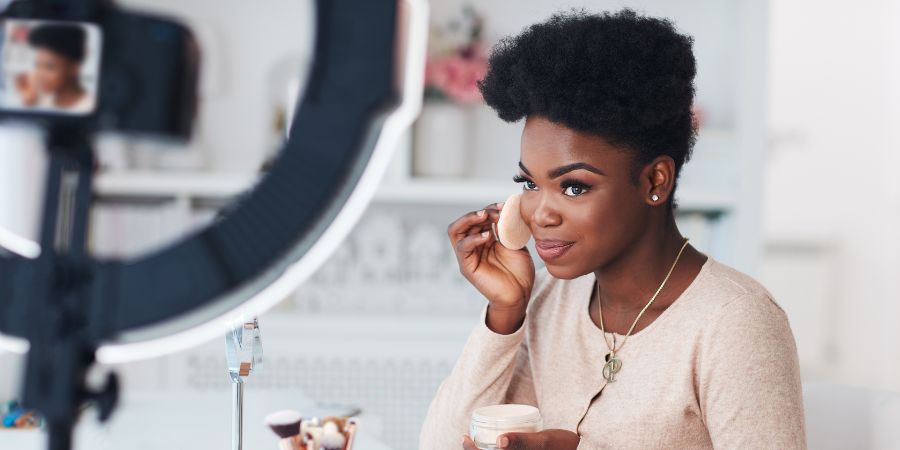
Introduction
Dream of making it as a beauty content creator? Launching a successful career in this competitive field requires a unique blend of passion, creativity, and strategy. Because, let’s face it: practically everyone nowadays wants to be famous on social media.
As platforms continue to grow in popularity, beauty influencers and content creators alike have the opportunity to reach millions of potential followers worldwide… But becoming a successful beauty content creator takes more than just uploading pretty photos and swatches.
In order to stand out, aspiring creators must:
- Develop a distinct brand identity;
- Master various content production skills;
- Continually engage with their audience in meaningful ways;
- And so much more.
Our goal today is to provide you with all the essential insights and practical tips needed to navigate the dynamic world of beauty content creation. By the time you’re finished reading, you’ll be able to establish a thriving online presence as a beauty guru… The likes of which the world has never seen before!
Read on for all the secrets and tips to becoming a beauty content creator!
What Is a Beauty Content Creator?
A beauty content creator is someone who leverages their expertise, passion, and influence in the beauty industry to create engaging digital content. This can include:
- Makeup tutorials;
- Skincare reviews;
- Beauty tips;
- Trends on platforms (e.g., Instagram, YouTube, TikTok, and blogs);
- And much more!
These creators often build their personal brand around their unique style, perspective, or area of expertise. For example, maybe that’s bold makeup looks, cruelty-free product recommendations, or minimalist beauty routines. Their content not only entertains and educates followers; it also often influences purchasing decisions.
Basically, beauty content creators play a vital role in shaping consumer behavior and trends within the beauty industry. This is why they’re such invaluable assets for brands and marketers looking to connect with their audience!
To thrive in this space, creators need to:
- Stay informed about new developments;
- Continually refine their skills;
- And remain authentic to their personal brand.
To Summarize
Beauty content creation is all about storytelling. It’s about connecting with your audience on a deeper level and building trust in your recommendations. While having stunning visuals is important, it’s equally crucial to have an authentic voice and message behind your content.
This means being genuine, transparent, and relatable to your followers!
Interested in being a professional makeup influencer?
Then you NEED to take this self-paced, online makeup certification course first!
Is a Beauty Content Creator the Same as a Beauty Influencer?
Honestly, the answer to this question depends on who you ask. Some may argue that content creators and influencers are two sides of the same coin, while others see them as distinct entities.
Generally speaking:
Beauty Influencers
- Use their social media presence to influence or persuade their audience’s opinions, behaviors, or purchasing decisions
- Often collaborate with brands in sponsored partnerships to promote products or services
Beauty Content Creators
- Focus more on consistently producing high-quality digital content for their followers
- May also partner with brands, but their main priority and passion is to create engaging and valuable content
A beauty influencer may be a beauty content creator, but not all beauty content creators are necessarily influencers. The key distinction lies in the primary motivation behind creating the content.
So, pause for a moment and ask yourself: why do you want to become a beauty content creator? Is it solely for the fame and free products? Or do you genuinely have a passion for creating valuable content and connecting with your audience?

Beauty Influencer Niche Ideas
So, what types of content can beauty content creators and influencers create? Here are 5 popular avenues:
Starting a Beauty Blog
A beauty blog can be an awesome outlet for sharing in-depth product reviews, personal beauty tips, and tutorials. Plus, it offers so much flexibility, which is a massive perk!
For example, you can write long-form content that allows for detailed explanations and personal stories. (This sort of content might not fit well on shorter-form platforms like Instagram or TikTok.) Another great idea would be to guest blog for beauty influencers.
To get started, choose a blogging platform that’s easy to use and aligns with your needs. We recommend platforms like WordPress or Squarespace. Then select a unique and memorable domain name, and boom, you’re ready to go!
Pro Tip: Refer to our guide on How to Start a Beauty Blog for more info!
Launching a YouTube Channel
Love being on camera and have a knack for video editing? Then starting a YouTube channel could be your ticket to success in the beauty world!
Videos allow you to showcase makeup tutorials, skincare routines, and even product hauls in a dynamic and engaging way. With YouTube, you can develop a strong connection with your audience through your personality and on-screen presence.
Longer videos allow for more in-depth explanations and demonstrations, making it a valuable platform for sharing your expertise. On the other hand, thanks to YouTube Shorts, you can more effectively target the ever-growing mobile audience, too!
If you’re new to YouTube, don’t be intimidated by the technical aspects of video creation. There are many resources available online to help you get started, such as this Beginner’s Guide.
Building an Instagram Persona
Instagram is a visual-first platform – and it’s one of the most popular platforms out there. As such, it’s perfect for creating a stunning portfolio of beauty photos, from makeup looks to skincare snapshots.
The challenge – and the beauty – of Instagram lies in capturing attention in a fleeting moment. This is done via a scroll-stopping image or a catchy caption. Furthermore, you can utilize stories and reels to also enhance your engagement!
Going Live on Social Media
Going live on platforms like Instagram or Facebook gives you the opportunity to interact directly with your audience in real-time.
This format works great for live makeup tutorials, Q&A sessions, or even virtual beauty events. Not to mention, live sessions can build trust and rapport with your followers. This is because they get to see the real, unscripted you.
One key tip? Be sure to promote your live events in advance to maximize attendance!
Hosting a Podcast
Podcasts offer a unique platform to explore beauty topics in a more conversational and relaxed format. You can:
- Conduct interviews with industry experts;
- Share personal experiences;
- Discuss the latest trends, etc.
As a beauty podcaster, you can dive deep into subjects that you’re passionate about. After all, podcasts are perfect for those who enjoy storytelling and have a talent for engaging listeners through audio!
Starting one can be as simple or as elaborate as you choose. Luckily, there are many tools available to help you record, edit, and publish your episodes. Begin by considering what unique angle or voice you can bring to your podcast that will resonate with your audience.
Consistency is crucial with all social media strategies – but especially so with podcasts! Regular episodes will keep your audience engaged. In turn, they’ll keep coming back for more insights and discussions!

Building a Beauty Brand: Finding Your Niche
Now that you know exactly what a beauty content creator is and the type of content you can create, let’s dive into the practical steps you can take to establish yourself as one!
To begin your journey, start by identifying what sets you apart from others in the industry. What is your niche (that is, that special thing that sets you apart from everyone else)?
To determine this, ask yourself:
- What unique perspective or expertise can you offer?
- Is there an aspect of your personality that you feel sets you apart from everyone else?
- Do you have a particular niche or aesthetic that makes you stand out?
- What aspects of beauty are you passionate about (i.e. cruelty-free products, budget-friendly makeup hacks, etc.)?
Influencer Brand Development: What To Cover
Once you’ve identified your niche, it’s time to get to work on developing a cohesive brand identity. Your brand is what will immediately come to mind whenever people think of you.
Some things that encompass your beauty brand include:
- Colors and/or images you repeatedly use throughout your content;
- The tone of voice you use in your videos, post captions, blog posts, etc. (e.g. informative, relatable, bubbly);
- The types of beauty products and brands you promote;
- Consistency throughout all social media platforms.
Essentially, it’s your forever first impression on new viewers – and the lasting impression on everyone else. Because of this, you want to ensure your brand is accurate and positive.
At the end of the day, remember that your brand as a beauty content creator should be a reflection of YOU! Therefore, don’t be afraid to experiment with different ideas and styles until you find what feels most authentic.
Pro Tip: Here’s everything you need to continue developing your beauty content creator brand!
Knowing Your Target Audience
Full stop – you can’t engage with a beauty audience if you don’t know who they are. Therefore, your next step is to identify your target market. These are the people you want to attract to your social media channels and follow you.
Here are some of the things you’ll need to research:
- Demographics: Consider the age, gender, location, and income level of the audience you aim to reach. Is your content geared towards teenagers, young adults, or a more mature crowd? Perhaps you’re targeting a specific gender, or maybe you’re focusing on a more inclusive approach.
- Interests and Preferences: What are the beauty trends or topics that interest your audience? Do they seek out new product releases? Or are they more interested in tips for sustainable and eco-friendly beauty practices? Understanding their preferences will help tailor your content to their interests.
- Challenges and Needs: Identify the common beauty-related challenges or needs your target audience faces. Are they struggling with finding the right skincare products for their skin type? Are they looking for makeup tutorials suited for beginners? By addressing these challenges, you can help position yourself as a helpful and trusted resource.
The better you understand your audience, the more effectively you can meet their needs and build a strong community around your brand.
Join the QC Makeup Academy Community
Train with the self-paced, online school that people all over the world are talking about!
The Best Social Media Platforms for Beauty Influencers
Keeping track of the latest and most popular social media platforms is Beauty Content Creation 101! Here are some platforms that tend to be more popular among beauty influencers than others:
Arguably the most popular platform for beauty content creators, Instagram allows you to showcase your work through photos and videos.
With over 2 billion monthly active users, YouTube is another go-to platform for beauty tutorials, reviews, and vlogs.
This short-form video app has taken the world by storm with its viral trends and challenges, making it an ideal platform for creative and engaging beauty content.
A visually-driven platform, Pinterest is perfect for sharing beauty inspiration and tips through images and infographics.
For beauty content creators who enjoy live streaming and engaging with their audience in real-time, Twitch can be a great platform to showcase makeup tutorials and have Q&A sessions.
While not as popular among younger generations anymore, Facebook still has a large user base and offers opportunities for building a community through groups and pages. That said, younger generations are still the target demographic for Facebook Reels. So, if you’re trying to target a younger crowd and are interested in creating short-form beauty videos, Facebook is worth considering.
Other Platforms to Consider
There are also many other niche-specific platforms such as Reddit, WeHeartIt, Discord, and Snapchat that may cater more directly to your target audience. Don’t hesitate to explore these options as well!
All of these options may sound like a lot, but it’s important to note that not all of these platforms will suit your style or audience. Rather, it’s best to experiment with different ones and see which work best for you. When it comes to which social media platforms you choose to focus on, quality over quantity is key.
Focus on creating top-notch content on one or two platforms, rather than spreading yourself thin across multiple. That said, keep in mind that new social media platforms are always on the horizon…
When the opportunity presents itself, give it a try! You never know, it could be the very thing that makes you go viral!
Produce High-Quality Beauty Content
Okay, so by now you have a solid idea of which social media sites you want to publish your content on. Moreover, you know which types of content you want to create (for example, you want to make TikTok videos and start a podcast).
So now, let’s take a look at actually creating that content. As a beauty content creator, the things you create should reflect your brand identity. At the same time, it should also be high quality and unique enough to stand out from the crowd.
Some key skills you’ll need include:
- Photography and video editing;
- Social media management;
- Copywriting for captions and blog posts, etc.
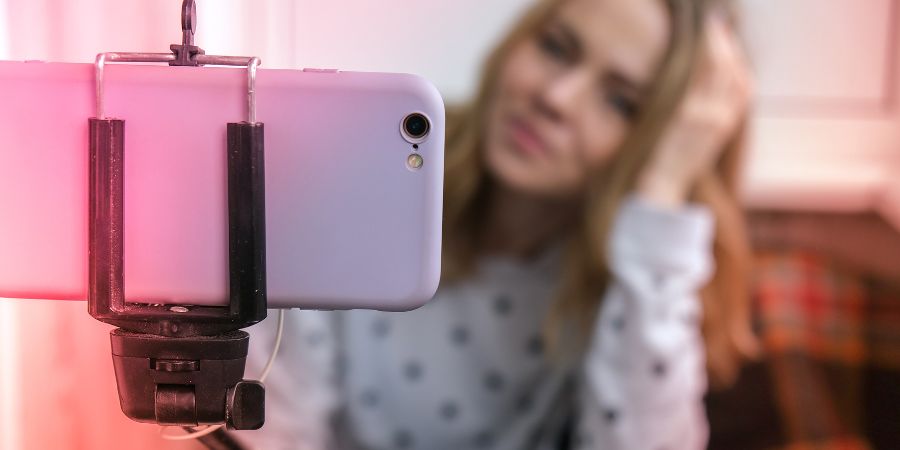
Beauty Influencer Tips for Creating Engaging Content
- Plan Ahead: Begin by creating a content calendar that can help you stay organized. From there, plan out your posts in advance with the help of a scheduling app. This can help you organize better, as well as ensure that your content is diverse and covers a range of topics.
- Collaborate: Partnering with other beauty creators or brands can help expand your reach and introduce you to new audiences. It’s also a great way to learn from others in the industry! We’ll touch more on this shortly.
- Stay Trendy: Keep an eye out for beauty trends and incorporate them into your content. For instance, try out new products or join in on hashtag challenges.
- Be Engaging: Don’t just post content; engage with your audience! People will like you better if they feel you’re actually relatable. You’re a real, three-dimensional person just like them – so act like it! Basically, acknowledge their support and make them feel like they matter.
- Use Analytics: Pay attention to your content’s performance and adjust accordingly. Use analytics tools like Instagram Insights or Google Analytics to track metrics such as engagement rate, reach, and conversions.
How to Develop Beauty Influencer Skills as a Beginner
Are any of the above skills NOT in your current wheelhouse?
Then consider taking online courses, or investing in equipment to elevate your content creation game!
For instance, if you’re not all that tech-savvy, you could start by learning the basics of video editing or photography. Alternately, if your writing skills are a bit rusty, you could enroll in a course on copywriting.
Not sure what goes into social media management or analytics? There are plenty of free online resources that can help you develop these skills! Furthermore, don’t hesitate to join online communities and seek advice from other beauty content creators. Oftentimes, they’re more than happy to share their knowledge and experience.
It’s also important to remember that, much like with any new endeavor, some skills can only develop through trial and error. Not everything you attempt will stick the first time around – and that’s okay! Experiment and have fun with your content to find what works best for you and your audience.
Grow your skills as a makeup artist
Get internationally-certified in as little as 3-6 months!
The Beauty Content Creator’s Salary
Alright, by this point you’re probably wondering, “Can I actually make any money off of this?”
The short answer is YES!
The slightly longer answer is yes – but there’s unfortunately no clear-cut answer, in terms of solid figures. We feel it best to be as honest about that as we can be. The reality is, your earning potential as a beauty content creator will be influenced by many factors, such as:
- Where you live;
- The size and engagement level of your audience;
- The platforms you use;
- Your level of expertise and credibility in the beauty industry;
- The types and number of brand partnerships you secure, etc.
Ways to Monetize Beauty Content
The good news is that there are multiple revenue streams available to beauty content creators. Here are just a few ways you can earn money doing what you love:
Sponsored Content
Brands may pay you to create posts featuring their products, which can be an excellent source of income, especially if you have a sizable following.
Brand Collaborations
Apart from sponsored posts, you can also collaborate with brands on various projects. For example, creating a product line together or doing a brand takeover for a day.
Affiliate Marketing
Through affiliate programs, you can earn a commission when your followers purchase products via your referral links.
Ad Revenue
If you create video content on platforms like YouTube, you can earn money through ad revenue. Basically, this works by displaying ads before, during, or after your video. So, the more followers you have, the better!
Product Sales
Launching your very own product line is another viable option for monetization. This could include everything from beauty merch to your own line of cosmetics.
Subscriptions
Platforms like Patreon allow content creators to offer exclusive content and experiences to subscribers in exchange for a monthly fee. Additionally, platforms like YouTube and Twitch offer membership options for fans to support their favorite creators.
Donations
Some content creators also offer a donation option for their followers who want to support their work.
Coaching Online Courses and/or Workshops
Sharing your expertise through educational content can offer another income stream, whether through a webinar, e-book, or subscription service.
Booking with Freelance Clients
You may also leverage your skills and knowledge to work with freelance clients, such as beauty brands or other content creators who need help with their own digital presence.

How to Collaborate with Beauty Brands
Collaborating with beauty brands can be a powerful way to grow your influence and reach new audiences as a content creator. Here are 3 solid strategies to help you successfully partner with brands:
Types of Beauty Influencer Brand Collaborations
There are various ways to collaborate with beauty brands, such as:
- Sponsored posts: Creating content that features the brand’s products in exchange for compensation;
- Product reviews: Sharing honest feedback with your audience and building trust by being transparent about the product(s) you’re reviewing;
- Giveaways: Increasing engagement and attracting new followers by incentivizing them with some type of gift;
- Affiliate programs: Receiving a commission for any sales generated through your unique link or code promoted in your social media bio, videos, blog article, and/or content post descriptions.
Finding The Right Partnerships
First, start by looking into potential brands that align with your values and content style. Do thorough research! After all, you want to collaborate with companies whose products you genuinely believe in and would use yourself.
Next, when you find a brand you’re interested in working with, engage with their content by liking, commenting, and sharing their posts. This interaction can create an initial connection before you send a partnership proposal.
Need help stepping out of your comfort zone so you can get some proper networking done? These helpful tips will get the ball rolling!
Pitching Your Beauty Influencer Media Kit
After this, you have to actually pitch yourself. Clearly articulate to them why you want to work together – and how your collaboration would be mutually beneficial.
It’s at this stage in the game that you’ll also want to provide your beauty influencer media kit. This is basically your resume. It showcases your skills, audience, and past work.
Crafting Your Kit
First, make sure to include an engaging bio that highlights what makes you unique as a beauty influencer. Next, incorporate key statistics that demonstrate your influence and reach, such as:
- High-quality visuals (e.g., professional photos of yourself, screenshots of your social media profiles, and examples of your content);
- A brief introduction to your personal brand;
- What sets you apart from other influencers/content creators;
- Your social media metrics (e.g., follower count, engagement rate);
- A summary of who your target audience/demographic is;
- Examples of previous collaborations or sponsored content you have done;
- Testimonials from happy clients or brands you’ve worked with;
- And contact information for potential partnerships or inquiries.
Including Your Rates
It can also be helpful to outline your rates for different types of content creation services. This transparency can ease brand negotiations and set clear expectations.
When approaching brands, always remember to be professional and concise. Furthermore, make sure to personalize your pitch for each specific brand. Don’t just use some generic, one-size-fits-all type of pitch.
They will be able to tell… And it won’t make you look good!
Pro Tip: When doing collaborations, make sure to disclose to your audience that it’s a sponsored post and/or includes affiliate links. This is not only ethically important – it’s also required by law!
Delivering Value
In any collaboration, make sure that you deliver value to both the brand and your audience. Create authentic, high-quality content that naturally incorporates the brand’s products. Moreover, maintain your voice and style to ensure your audience remains engaged.
This way, they’ll see that the collaboration as a natural fit!
Remember: successful collaborations stem from alignment in values, authentic engagement, and creating win-win scenarios for both you and the brands you partner with. By consistently hitting these checkpoints, you’ll build stronger relationships with brands. In turn, this will pave the way for endless future opportunities!
Create a Beauty Influencer Platform: Your Audience Engagement
Audience engagement is important because it shows how well your content resonates with your followers – and where you need to improve. When you have a high level of engagement, brands will see that you’re influential – and an investment-worthy partner!
Captivating Your Followers
Ready to build strong audience engagement?
Then you need to make captivating content that resonates with your followers! This means consistently providing value through educational, entertaining, or inspiring posts, etc.
(Basically, whatever aligns best with your niche.)
You can also boost engagement by hosting Q&A sessions, polls, and interactive challenges on social media platforms. These types of activities encourage conversation, as well as make your audience feel more connected and involved with your brand.
And don’t forget to respond to comments and messages from your followers, too! This personal touch helps build a deeper connection. Plus, it shows that you legitimately value their support and feedback.
Building Trust as a Beauty Influencer
This step is essential for establishing long-term credibility and loyalty with your audience. Why? Because trust is the cornerstone that keeps your audience engaged and committed to your brand!
One of the most effective ways to do this is through transparency and authenticity. Clearly communicate your intentions – whether you’re promoting a product, sharing a personal experience, or offering advice.
Furthermore, be upfront about partnerships and sponsored content. This honesty reinforces your dependability. You can also provide genuine and unbiased reviews of products. After all, your followers need to know they can count on your insights as reliable and truthful!
Tracking Your Audience Engagement
Tracking your audience engagement is another crucial step. When you do this, you better understand what content resonates with your followers. On the other hand, it also shows where you might need to make improvements.
To effectively monitor engagement, keep an eye on key metrics like:
- Likes
- Comments
- Shares
- Saves
We also recommend using those social media analytic tools we talked about earlier to gain a deeper understanding of these metrics! Platforms like Instagram, YouTube, and TikTok offer in-depth analytics that allow you to track engagement rates and audience demographics. They can even show you the times when your followers are most active.
Leveraging this data will help you tailor your content strategy so that it better meets your audience’s interests and preferences. Importantly, don’t shy away from experimenting with different content styles and formats. Try mixing videos, carousel posts, stories, and live sessions to see what garners the highest engagement!
20 Best Ethical Practices for Beauty Influencers
If you want to launch a successful career as a beauty content creator, then your best bet is to follow ethical practices that support your long-term:
- Sustainability;
- Authenticity;
- And credibility.
The following ethical practices check all of these boxes:
Disclose Partnerships, Sponsored Content, and Affiliate Links
As we mentioned earlier, this is not only ethically important but also legally required.
Prioritize Product Quality Over Quantity
Your audience trusts your recommendations. So, be selective in the brands you collaborate with and promote.
Avoid Promoting Harmful Products or Questionable Ingredients
Always do thorough research on the safety and ethics of a brand before featuring their products.
Be Transparent About Any Editing or Filters Used in Photos/Videos
This maintains authenticity and honesty with your audience. Not to mention, it’s also a good reminder that perfection isn’t the goal!
Avoid Spreading Misleading Information or False Claims
Your platform holds influence. So, make sure to fact check and always share accurate information.
Respect Copyrights and Intellectual Property
NEVER use someone else’s content without permission and ALWAYS give proper credit when necessary! This is one of the easiest ways to get cancelled, real talk.
Stay True to Your Values and Voice
Don’t compromise on who you are as a content creator in pursuit of partnerships or popularity. Be a leader, rather than a follower.
Don’t Overpromise or Underdeliver
Make sure you’re able to fulfill the commitments and expectations set in any collaboration. Otherwise, you’ll likely come across as unprofessional – and gain a negative reputation in the community!
Avoid Buying Followers or Engagement
It may seem tempting to boost your numbers quickly, but it’s not a sustainable strategy. Ultimately, pulling this stunt will harm your credibility, which will lead to a massive drop in the authentic followers you do have once the secret is inevitably out.
Engage with Your Community Genuinely
Respond to comments and messages with sincerity, and show appreciation for your followers’ support. This connection builds a loyal and engaged audience willing to support you through your journey.
Stay Updated With Industry Standards and Regulations
Being knowledgeable about ethical guidelines and industry changes helps you remain compliant and trustworthy.
Choose Diversity and Inclusivity In Your Content
Your platform has the power to influence societal norms. So, use it responsibly by representing diverse voices and promoting inclusivity. Feature different skin types, body shapes, ages, and cultural backgrounds in your content to celebrate diversity and promote inclusivity.
Be Mindful of Your Language and Acknowledge Biases
Use inclusive and respectful language. Additionally, be aware of any personal biases that may influence your opinions or recommendations.
Don’t Participate in Unethical or Harmful Trends
Just because something may be popular on social media doesn’t mean it aligns with your values or is safe for your audience.
Educate and Empower Your Audience
Use your platform to educate your followers about ethical beauty practices, sustainability, and self-love. Furthermore, encourage them to make informed choices and embrace their unique beauty. Avoid sounding preachy.
Take Breaks and Prioritize Self-Care
Being a beauty influencer can be demanding! So, make sure to take care of yourself mentally, physically, and emotionally.
Don’t Engage in Drama or Negativity
It’s tempting to get involved in online conflicts or controversies, but remember that it reflects poorly on you as a content creator. No cap – the age-old saying, “All publicity is good publicity,” is wrong. Don’t make the wrong name for yourself.
Practice Patience and Persistence
Building a reputable brand takes time, so stay committed and consistent in delivering quality content. Your dedication will shine through, attracting a loyal audience.
Use Your Platform for Good
Lastly, use your platform for more than just promoting products. Share important messages, support causes you believe in, and give back to your community.
10 Beauty Influencer Mistakes to Avoid
On the other hand, being successful also means knowing what not to do, too. So, here are 10 industry faux pas to avoid committing:
Ignoring Your Audience
One of the biggest mistakes is neglecting your followers. Make an effort to acknowledge comments, answer questions, and engage in discussions. Your audience will appreciate your efforts, and this interaction can significantly boost loyalty and engagement.
Alienating Your Followers
In a similar vein, avoid creating divisive content and alienating your audience. It’s important to express your opinions, but always do so in a respectful and inclusive manner.
Forgetting About Your Brand
When you collaborate with brands, it’s essential to maintain your brand identity and values. Be selective about the partnerships you accept, ensuring that they align with your niche and resonate with your followers.
Copying Others’ Content
Originality is vital for standing out and building a unique brand. So, avoid copying other beauty influencers’ content to maintain authenticity and credibility with your audience.
Lack of Transparency
As we’ve mentioned a couple times now, always be transparent about sponsorships, partnerships, and affiliate links. Not only is this ethically responsible; it also shows your audience that you value their trust and are committed to providing genuine recommendations and insights.
Over-Posting Sponsored Content
While collaborations are essential for revenue, bombarding your audience with too much sponsored content can make your platform seem more about sales than connection and authenticity. Balance is key! Mix promotional posts with organic content that adds value – without feeling commercialized.
Lack of Authenticity
Followers can sense when you’re not being true to yourself or are only motivated by sponsorship deals. As such, stay connected to your personal brand and voice. This will help ensure that all of your content reflects your true self and beliefs.
Ignoring Analytics and Feedback
Skipping on analyzing engagement metrics and dismissing constructive feedback from your audience can stall your growth. Rather, be open to adjustments based on performance data! Learn to pivot when something isn’t resonating with your followers.
Making a Negative Impression with Potential Collaborators
When attempting to approach prospective brands and sponsors, always be polite and professional. Remember: your reputation extends beyond your followers. The beauty industry is a tight-knit community, and word travels fast!
Underestimating How Much Work Goes Into This Job
With so much beauty content online, the bar has never been higher in terms of competition. Meaning: high-quality visuals and clear, captivating storytelling are imperative for standing out! So, invest in good equipment and editing tools. On top of that, continually hone your skills to ensure your content is top-notch!

Beauty Content Creator FAQ
Q: What are the top 5 beauty influencer success strategies?
A:
- Building a Strong Personal Brand: To achieve success as a beauty content creator, cultivating a unique and recognizable personal brand is essential. This involves identifying your niche, being consistent with your style, and sharing your authentic personality. Your brand is what sets you apart from others – so, make sure it’s memorable and resonates with your audience.
- Consistent Content Creation: Regularly posting high-quality content is key to keeping your audience engaged and attracting new followers. Create a content calendar to plan out your posts and ensure a steady flow of fresh and relevant material. Consistency not only helps you remain visible on social media platforms; it also sets expectations for your audience.
- Engaging with Your Community: Actively interacting with your followers is crucial for building a loyal community. Respond to comments and messages, ask for feedback, and involve your audience in your content creation process. This engagement fosters a sense of community and makes your followers feel valued and connected to your journey.
- Collaborating with Other Creators: Partnering with fellow influencers and brands can expand your reach and introduce you to new audiences. Collaborations provide opportunities for creative exchange and help build your credibility within the beauty industry. Choose partners whose values align with yours to ensure authentic and beneficial partnerships.
- Staying Informed and Adapting: The beauty industry is constantly evolving, so staying updated on trends and industry changes is vital. Attend beauty events, follow industry news, and constantly seek to improve your skills. Being adaptable and open to change will help you stay relevant and innovative, ensuring ongoing success in your beauty influencer career.
Q: How can I stay updated with beauty trends?
A: Following industry leaders and fellow influencers on social media is an excellent starting point. Subscribe to beauty magazines and blogs that offer insights and predictions about upcoming trends to keep your insights fresh and relevant. Also, don’t forget to explore platforms like Pinterest and TikTok, where countless new ideas and styles emerge regularly.
Additionally, experimenting with trends yourself and sharing your genuine experiences with your audience can also establish your channel as an innovative source of beauty inspiration. Always remember to inject your own personality into each trend to make it truly yours!
Q: What are the best beauty editing apps?
A:
- Facetune: This app is perfect for retouching skin, whitening teeth, and refining selfies to achieve a polished look without sacrificing authenticity. The intuitive interface allows for easy adjustments, making it a favorite among beauty enthusiasts.
- VSCO: Known for its wide range of filters and precise editing tools, VSCO is ideal for beautifying your photos while maintaining a natural aesthetic. Its editing tools empower you to adjust exposure, contrast, and saturation effortlessly.
- Adobe Lightroom: For more advanced editing needs, Adobe Lightroom offers powerful tools to refine your images to professional standards. Its extensive range of customizable presets and editing options make it a go-to for serious content creators wanting fine control over their images.
- Snapseed: This free app by Google features a comprehensive suite of tools suitable for both novices and experienced editors. With its “Selective Adjust” feature, you can target specific areas of your photo to subtly enhance details or correct inconsistencies.
- Canva: While known for graphic design, Canva also offers a host of editing features that let you create eye-catching and cohesive social media posts. Its versatile templates and text options allow for adding creative flair to your content.
Q: What are the best video editing apps?
A:
- InShot: A favorite for its straightforward interface, InShot provides an array of features tailored for social media, including video trimming, merging, and speed adjustments. It also allows you to add music, text, and filters, ensuring your videos are engaging and polished.
- iMovie: Perfect for beginners, iMovie offers a clean and user-friendly platform for creating professional-looking videos on Apple devices. With its simple drag-and-drop tools, you can easily cut, arrange, and add effects to your videos. It also offers seamless integration with other Apple apps, making your editing process smooth and efficient.
- Adobe Premiere Rush: Designed for on-the-go editing, Adobe Premiere Rush is perfect for creators looking to edit from their mobile devices without compromising on quality. The app boasts powerful editing capabilities while allowing for easy transitions to more complex projects in Adobe Premiere Pro if needed.
- KineMaster: Known for its robust editing features, KineMaster offers multiple layers of editing, blending modes, and chroma key compositing for more creative video projects. Its precision controls and real-time preview make it an excellent choice for those ready to explore advanced editing techniques.
- Splice: With an intuitive design, Splice makes it quick and easy to create stunning videos by allowing you to splice, trim, and add transitions. It also provides a library of music and sound effects to perfectly complement your visuals.
Q: What is multi-platform beauty influencing?
A: Multi-platform beauty influencing involves leveraging several social media platforms to broaden your reach and connect with diverse audiences. By doing this, you share your content with a larger community. In turn, this maximizes engagement and expands your influence.
Each platform offers unique features and caters to different demographics. So, tailoring your content to suit each one is crucial. For instance, Instagram is ideal for sharing high-quality images and short beauty tips. YouTube, on the other hand, allows for more in-depth tutorials and product reviews. TikTok, with its focus on short, snappy videos, can help capture the attention of younger audiences.
Engaging on multiple platforms not only enhances your visibility – it also provides varied ways to express your creativity and connect with followers in more meaningful, personalized ways!

